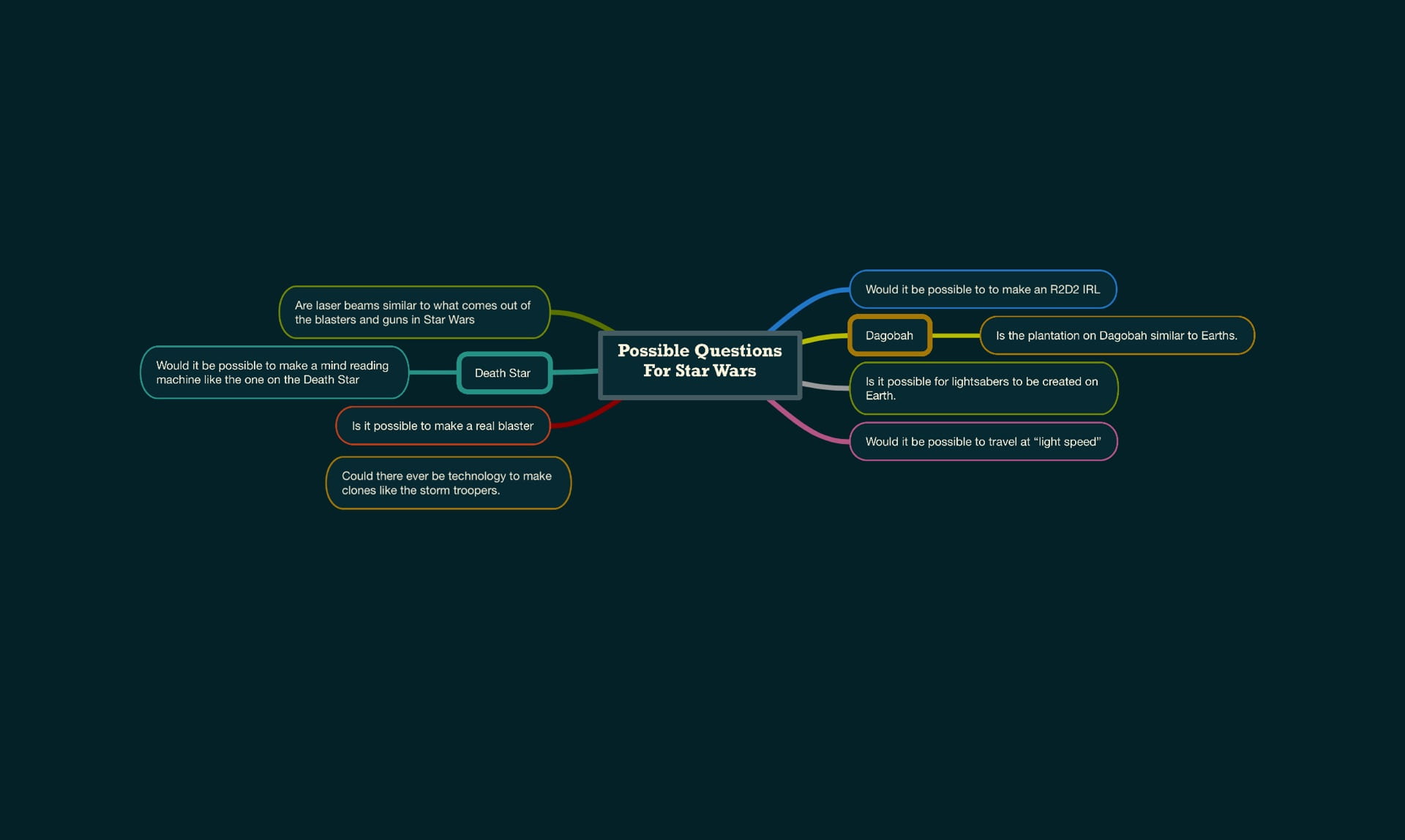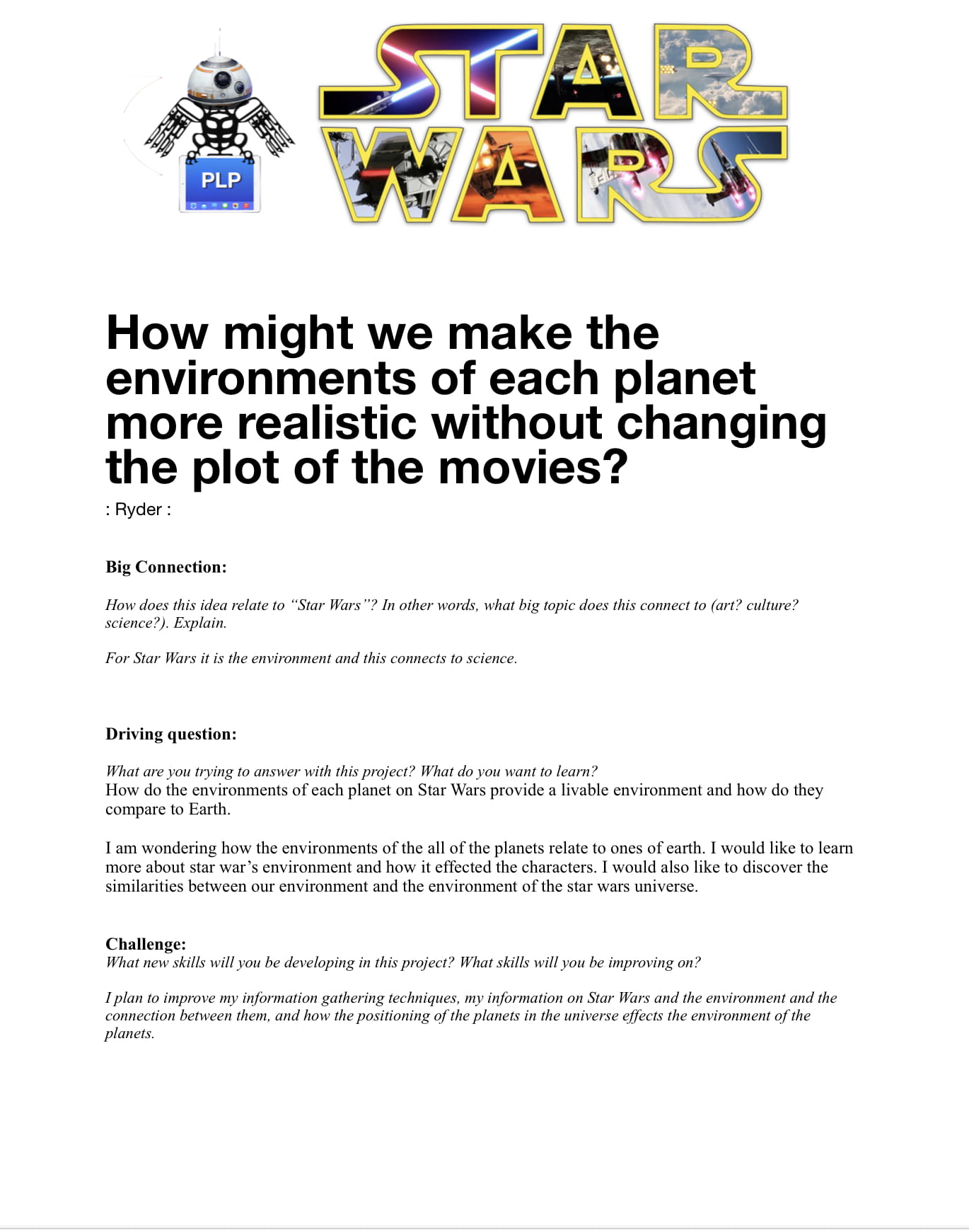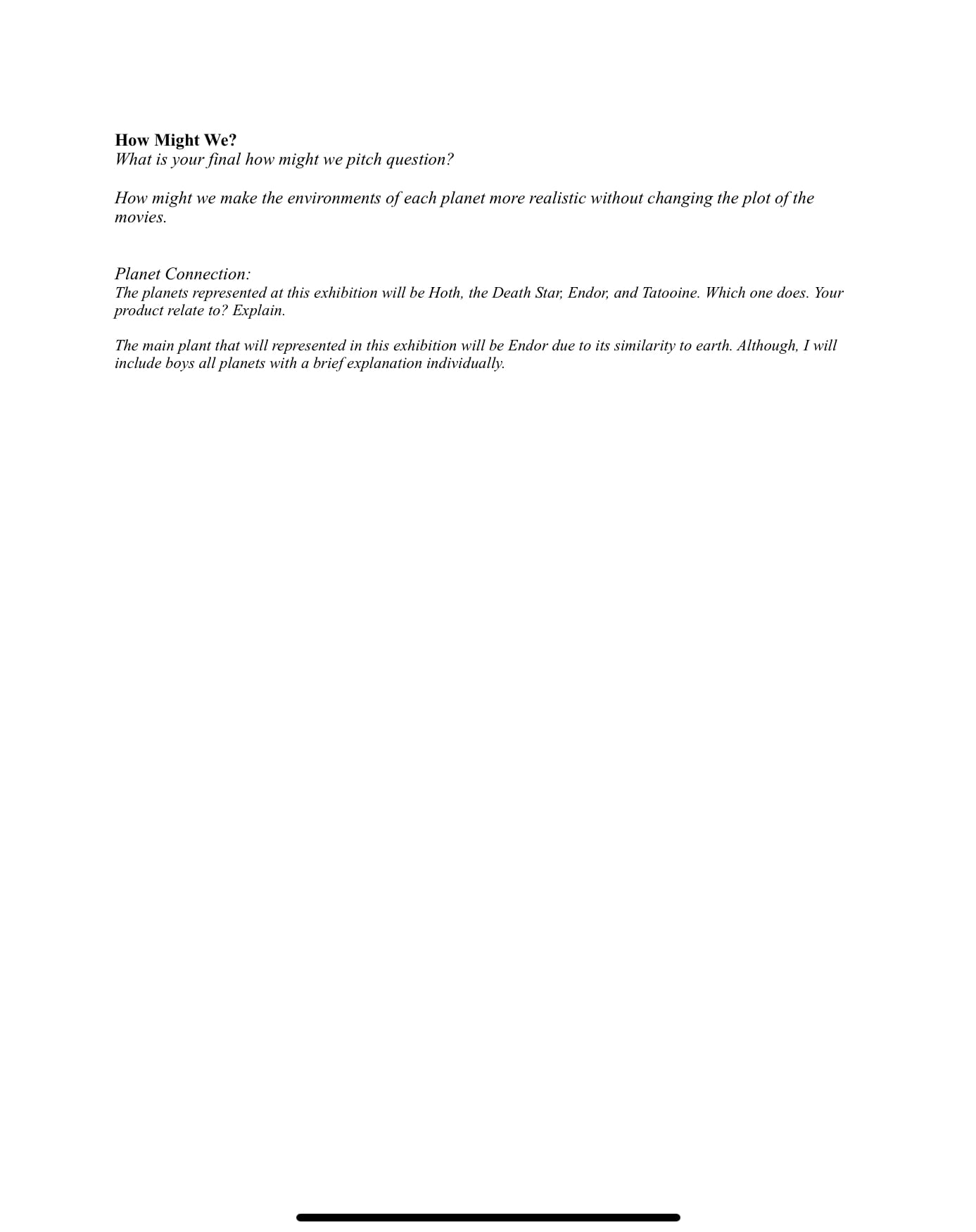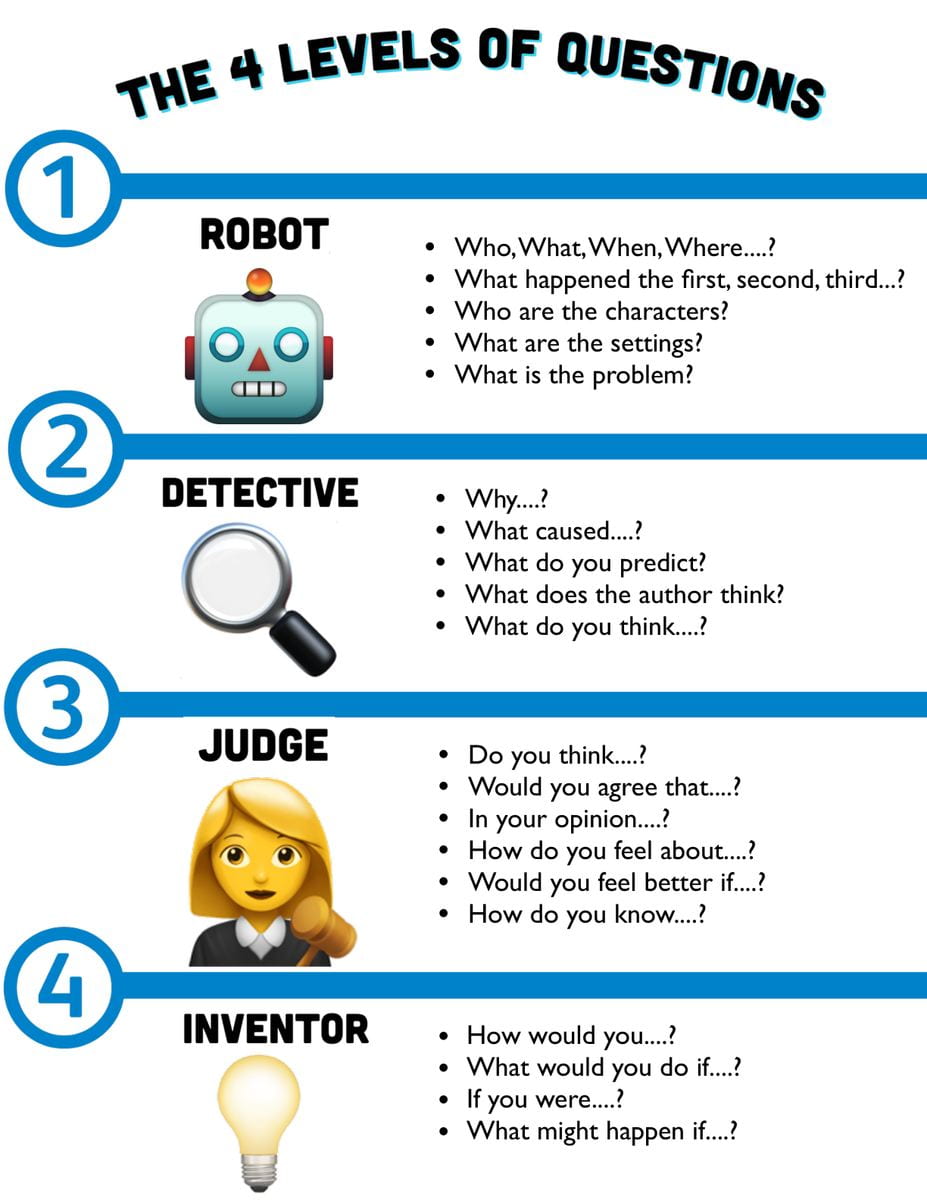What a month!
I can now say that my brain is 90% Star Wars. I can tell you anything form the plot of the movies to why the Death Stars environment is un realistic when it comes to gravity. I have learned so much and I am so exited to share it with you in this post!
At the beginning, I Realized I did not have much recollection of the Star Wars movies, even though I had almost watched the entire series a while back. I was quite worried that my knowledge on this topic would limit me for this project. I vividly remember desperately searching my brain for past knowledge on Star Wars when I first I was informed. The rest of my afternoon after that was spent on YouTube watching five minute recaps of all the Star Wars movies. Although by the second or third day of of the project I became aware that the previous afternoons of reading about what a Jedi was were not needed. If I had only known that I would have plenty of time to dig deep into the Star Wars universe in the weeks to come.
“Star Wars” has been a cultural touchpoint for over 40 years now. What is it about this franchise that inspires our world to keep making content related to it and spending money on it? During this project, you will learn about the “Star Wars” universe – from movies to lunchboxes – while designing your own inquiry project. Using creative and critical thinking, you will address your inquiry challenge by exploring materials, using tools and equipment, designing and building, developing processes, and communicating the merits of your work. Ultimately you will present this understanding at the PLP Winter Exhibition and share to the world!
View point from Ms. Willemse
We obtained the knowledge we need through the various fazes of the LAUNCH cycle.
Throughout the corse of this project we were asked to answer the driving question: “How might I design and build an answer to my own inquiry”. As well as our answer to our inquiry question we completed a science and math project that would also be presented at the night of the Exabition but before we started building much had to be done.
L- look, listen and learn.
The first stage in the LAUNCH cycle was L. This phase was all about Being open to new ideas and to approach your research with an open mind. For the “L” phase we were asked to brainstorm any information about the Star Wars universe that seemed interesting.
The competency for this stage was
Look, Listen, and Learn
- Engage in a period of research and empathetic observation in order to understand design opportunities
the milestone for this competency was something called a “How Might We Form”. This activity helped narrow down our research an aspect of Star Wars that may Interest us for our final product.
My How might we question was:
How might we make the environments of each planet more realistic without changing the plot of the movies.
Since our final product was an answer to a question, we were asked to state a question as a “how might we”. I thought that I Covered this competency with ease by both reflecting my learning on the milestone and the LAUNCH journal which portrayed my research.
A= Ask Tons Of Questions
The next phase in the launch cycle was the “A” phase. In this phase we asked tons of questions about our topic of interest. This stage was to create a deeper knowledge Of our topic which will help us in the upcoming phase. The milestone for the “A” phase was The “Project Pitch Form”. I had already had a couple of ideas stirring in my brain but during this phase we were assign our planets. Being assigned the Death Star my original plan would not work as well, forcing me to think creatively to come up with a new conclusion. I grew as a learner due to the demands of having to be flexible in this stage.
Competency Being Assessed: Ask the Hard Questions
- Identify potential users and their requirements for a chosen a design opportunity
- Identify criteria for success and any constraints
I found that I struggled With coming up with lots of questions that could improve my knowledge on this topic. coming up with robot questions took less brain power therefore, I ended up with more quantity than quality questions. Although, as we progressed in this phase, my questions started getting deeper and deeper until I had a well formed understanding of my topic.
U= understand the process or problem.
By this phase turn on I began to understand the process of how I was going to create an answer to my inquiry question. In this phase we learned how to use our technology to our advantage to research our topic. We focused on how to use more specific search terms and how to extract the most information in the a productive way.
Competencies Being Assessed:
Understand the Process or Problem
- Identify and use sources of information
- Critically analyze and prioritize competing factors, including social, ethical, and sustainability considerations, to meet community needs for preferred futures
- Choose an idea to pursue, keeping other potentially viable ideas open
Innovative Designer
- Students use a variety of technologies within a design process to identify and solve problems by creating new, useful or imaginative solutions
The main focus for this stage was the innovative designer competency. This competency focused on using technology to our advantage as I mentioned before. I thought that I covered this competency and even strived to extend. For this competency we exported a copy of our LAUNCH journal. Throughout the journal I used full use of the technology provided to help me design an answer to my inquiry question. This stage was a huge step forward to our final product.
N- Navigate Ideas
In this phase we were asked to navigate our ideas for our end result. To help me with this I constructed a brainstorm that held all of my possible ideas. I then made a short video that showed how narrowed down all of my ideas to one.
After three phase of the LAUNCH cycle it was time to come up with an answer to my driveing question. I decided that I would construct a detailed model of the Death Star with that could realistically hold gravity.
Competencies Being Assessed:
Navigate Ideas
- Generate potential ideas and add to others’ ideas
- Screen ideas against criteria and constraints
- Develop a step-by-step plan that identifies key stages and resources and carry it out, making changes as needed
- Identify and use appropriate tools, technologies, and materials for production
Innovative Designer
- Students use a variety of technologies within a design process to identify and solve problems by creating new, useful or imaginative solutions
Once again the innovative designer competency was used. For this phase our video required extensive use of technology and design. For both the brainstorm and the video I thought that I covered this competency tot the best of my abilities. The “N” phase was a crucial step forward towards our end result.
C= Create a prototype
This is when it gets interesting. We’ve came out of L, A, and U phases with enough knowledge start planning out our final answer to our questions, after that we navigated our ideas in to one thought-out solution, and now it is time to start building. After multiple blueprints and brainstorms the assembly process begins!
https://youtu.be/vZa5itGzjAI
Competencies Being Assessed:
Create, Make, Design, and Build
- Explore and test a variety of materials for effective use and potential for reuse, recycling, and biodegradability
- Prototype making changes to tools, materials, and procedures as needed
- Record iterations of prototyping
- Use materials in ways that minimize waste
Computational Thinker
- Students develop and employ strategies for understanding and solving problems in ways that leverage the power of technological methods to develop and test solutions
The first competency wants to create, make, design, and build. This competency why did not just focus on creating a well developed product, but using materials in ways that minimize waste. Due to my project mainly consisting of recyclable material, I used minimal waste for my end result. It was at this phase that I begin to appreciate all of the previous stages. I started to realize that I would not have been able to create such a functional prototype without the past knowledge. This is when I would say I had grown most as a learner.
H= highlight and fix.
This when we see what went wrong and what we can improve in later learning. The activity we did for this phase was extremely important towards our end result. In this phase I realized how important pointing out mistakes is and that if you can see what went wrong you can almost always fix it. We also learned all about the “FAIL” acronym which is short for First Attempt In Learning.
Competencies Being Assessed:
Highlight and Improve
- Identify sources of feedback
- Develop an appropriate test of the prototype
- Conduct the test, collect and compile data, evaluate data, and decide on changes
- Edit based on feedback from critiques
- Iterate the prototype or design idea
For this competency I thought that I showed great understanding on how to make a functional Accurate answer to my Inquiry question. I did a great job fixing any problems or FAILs that I had alon the way. I thought that I took any feedback to heart and typed my hardest complete my work to the best of my ability.
Well… there you have it. One month of sweat and tears and I would say it was a success. Even though there was a few set backs in the various phases I would say that the amount I matured as not only a learner but as a person was incredible. Overall the exabition was a great experience and I am exited for the next one this spring. Make sure to comment any comments or questions you have on this post.
Thank you!





